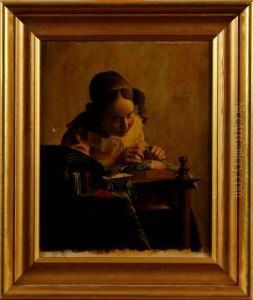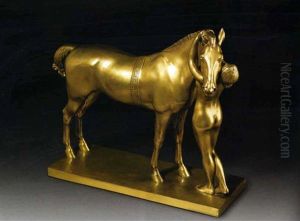Erich Schmidt-Kestner Paintings
Erich Schmidt-Kestner was a German sculptor known for his small-scale figurative works and portrait busts, which often showcased his skill in capturing the character and essence of his subjects. Born on October 10, 1889, in Erfurt, Germany, he was part of a generation of artists who were active in the early 20th century, a time of significant artistic innovation and change in Europe.
Schmidt-Kestner studied at the School of Arts and Crafts in Erfurt before attending the prestigious Prussian Academy of Arts in Berlin, where he was a pupil of the renowned sculptor Peter Breuer. His education and early career were marked by the influences of traditional academic art, but like many of his contemporaries, he was exposed to the emerging styles of expressionism and modernism, which began to inform his work.
Throughout his career, Schmidt-Kestner received commissions for public monuments and war memorials, a common practice for sculptors of his time, especially in the period following World War I. His work, however, also showed a keen interest in the individual, with a number of his sculptures focusing on the human form and the portrayal of personal character through facial expressions and body language.
The rise of the Nazi regime in Germany in the 1930s had a profound impact on the art world, with many artists facing censorship or being labeled as 'degenerate.' Despite this challenging atmosphere, Schmidt-Kestner continued to work and create art until his untimely death in 1941.
Erich Schmidt-Kestner's legacy is somewhat overshadowed by the more famous artists of his time, and many of his works were lost or destroyed during the tumultuous years of World War II and the subsequent division of Germany. Nevertheless, his contributions to the field of sculpture, particularly in the realm of portraiture, remain noteworthy for their craftsmanship and the insight they provide into the human condition.

